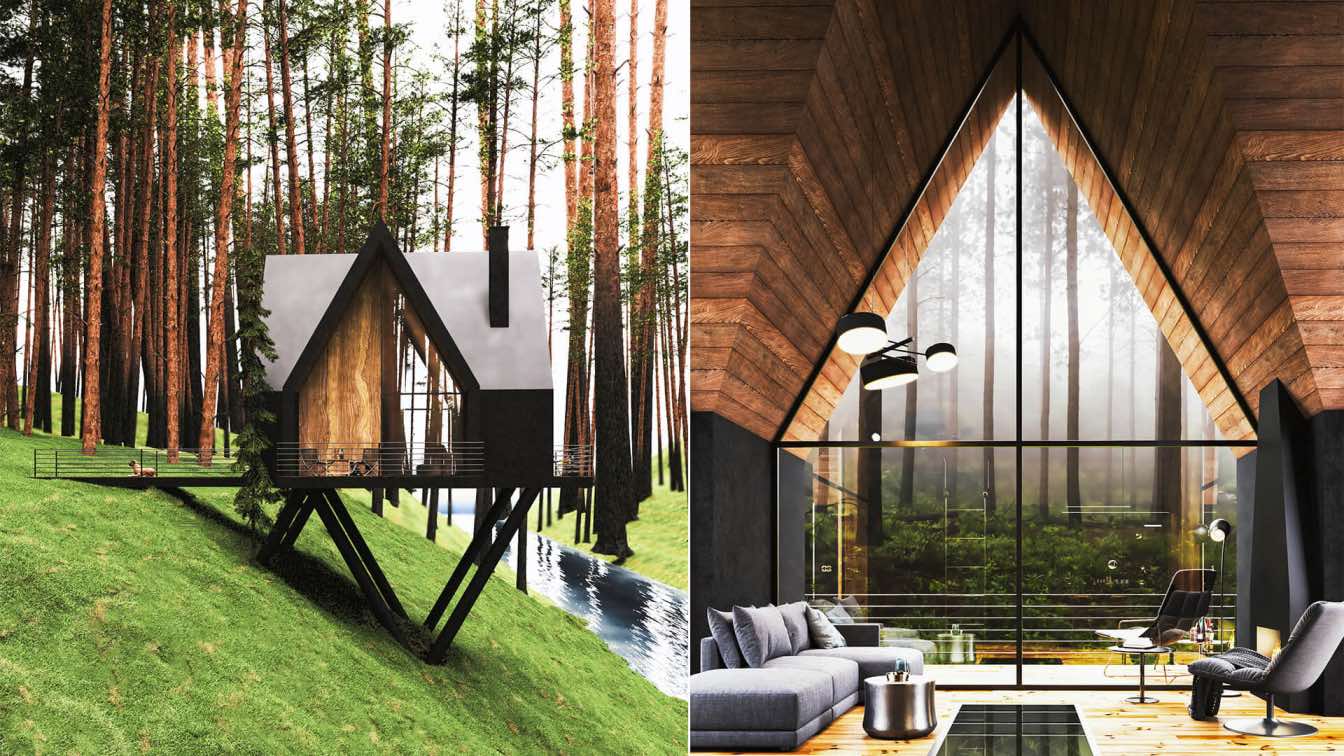
Introduction
Slope house architecture offers a unique blend of functionality and aesthetics, seamlessly integrating homes into the natural landscape while providing breathtaking views and innovative design solutions. In this article, we’ll explore the concept of elevated living through inspiring slope house architecture, highlighting the ingenuity and creativity behind these remarkable structures.
Harmonizing with Nature
One of the most compelling aspects of slope house architecture is its ability to harmonize with the surrounding environment. By leveraging the natural contours of the land, slope houses effortlessly blend into their surroundings, creating a seamless transition between indoor and outdoor spaces. Architects often incorporate sustainable materials and eco-friendly design principles to minimize the environmental impact and enhance the overall connection to nature.
Maximizing Views
One of the defining features of slope house architecture is its ability to maximize views of the surrounding landscape. Whether perched atop a hillside or nestled within a forested enclave, slope houses offer unparalleled vistas that capture the beauty of the natural world. Architects strategically position windows, balconies, and outdoor living areas to frame scenic views and invite the outdoors in, creating a sense of tranquility and serenity for residents to enjoy.
Innovative Design Solutions
Slope house architecture demands innovative design solutions to overcome the challenges posed by steep terrain and irregular topography. Architects often employ techniques such as cantilevered structures, terraced gardens, and split-level floor plans to optimize space and create functional living areas. These creative solutions not only enhance the visual appeal of slope houses but also maximize usable square footage and improve overall livability.
Integration of Indoor and Outdoor Spaces
One of the hallmarks of slope house architecture is its seamless integration of indoor and outdoor spaces. Expansive windows, sliding glass doors, and outdoor patios blur the boundaries between interior and exterior, allowing residents to experience the beauty of nature from every vantage point. Outdoor living areas, such as terraces, decks, and gardens, become extensions of the home, providing versatile spaces for relaxation, entertainment, and contemplation.
Customization and Personalization
Slope house architecture offers endless opportunities for customization and personalization to suit the unique preferences and lifestyle of each homeowner. From sleek modern designs to rustic mountain retreats, slope houses can be tailored to reflect a wide range of architectural styles and aesthetic sensibilities. Homeowners have the flexibility to collaborate with architects and designers to create bespoke homes that perfectly align with their vision and needs.
Efficient Use of Space
Efficient use of space is essential in slope house architecture, where land constraints and steep terrain present challenges for traditional home construction. Architects employ clever design strategies such as open floor plans, built-in storage solutions, and multi-functional furniture to maximize usable space and minimize wasted square footage. Every nook and cranny is thoughtfully utilized to ensure that slope houses are both practical and inviting for residents.
Seamless Integration of Technology
Innovations in technology play a crucial role in slope house architecture, enhancing comfort, convenience, and sustainability. Smart home systems allow residents to control lighting, heating, and security remotely, while energy-efficient appliances and renewable energy sources minimize environmental impact and reduce utility costs. Architects seamlessly integrate these technologies into the design of slope houses, ensuring that they remain at the forefront of modern living.
Preservation of Natural Resources
Slope house architecture prioritizes the preservation of natural resources and the protection of the environment. Architects carefully consider factors such as water conservation, erosion control, and habitat preservation when designing slope houses to minimize their ecological footprint and promote sustainable living practices. Green building materials, passive solar design, and rainwater harvesting systems are just a few of the strategies employed to reduce environmental impact and foster a deeper connection to nature.
Conclusion
Elevated living through inspiring slope house architecture offers a unique opportunity to connect with nature, maximize views, and enjoy innovative design solutions tailored to the demands of steep terrain. By harmonizing with the natural landscape, maximizing indoor and outdoor spaces, integrating cutting-edge technology, and prioritizing sustainability, slope houses exemplify the perfect marriage of form and function, providing residents with a truly exceptional living experience. Read more about slope house design
